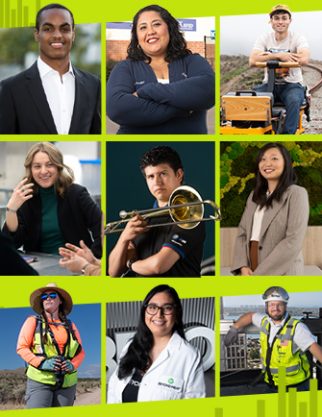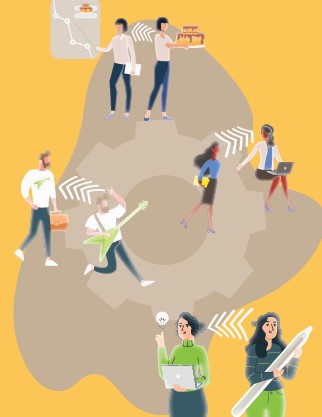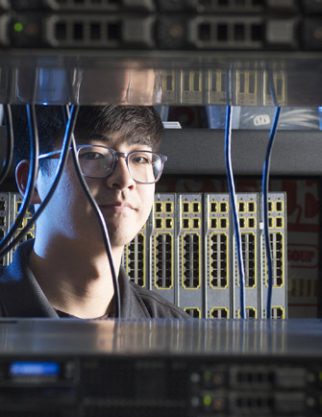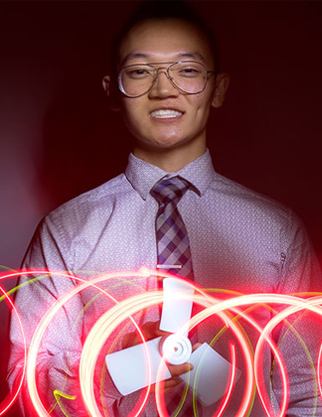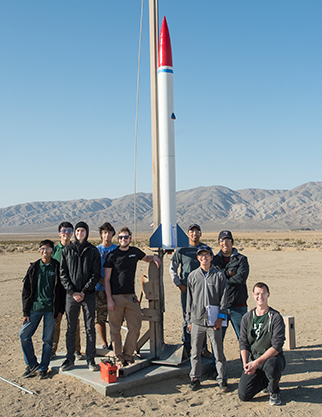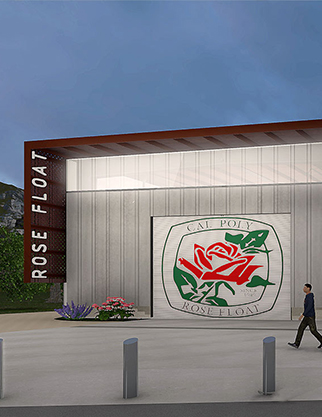They are often referenced as soft skills. Cal Poly Pomona calls them essential skills.
Creativity, communication and critical thinking, to name a few, are present in every workplace but those skills are sometimes not as straightforward to teach as math, science, English and history.
Cal Poly Pomona considers essential skills as important to preparing students for their career as the knowledge they gain specific to their fields of study. That is precisely why the intentionality of teaching them is all that much more imperative.
The university’s experiential, learn-by-doing approach offers students an opportunity to not simply ingest the information their professors provide, but to put those classroom lessons into practice.
Creativity
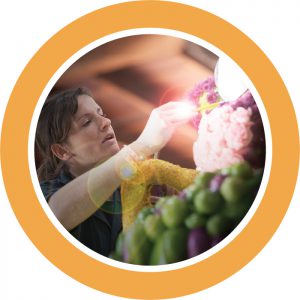 Whether it’s designing the intricacies of a liquid-fueled rocket engine or transforming recycled plastic into comfortable T-shirts, to say creativity is encouraged at Cal Poly Pomona would be a vast understatement.
Whether it’s designing the intricacies of a liquid-fueled rocket engine or transforming recycled plastic into comfortable T-shirts, to say creativity is encouraged at Cal Poly Pomona would be a vast understatement.
Project-based learning encourages students to solve real-world problems and create their own startup companies. The push toward innovation doesn’t stop there. Students exercise their creativity by not settling for the most obvious solution; rather they are encouraged to explore alternatives at every turn.
“Many students think of what they see as the easiest solution and they just want to start analyzing it,” says Kenneth Lamb, the faculty director of the Student Innovation Idea Labs. “Requiring students to look at alternatives is what stretches their creative muscles.”
Val uing Diversity
uing Diversity
At the most diverse polytechnic university in the country, students are exposed to an expanse of perspectives. Interactions with a variety of people from different cultures and socioeconomic groups widens their social circles and broadens their understanding.
At Cal Poly Pomona, roughly one-third of the student population is Latino and one-quarter is Asian. CPP ranks in the top six nationally among universities in the number of bachelor’s degrees awarded to Hispanic students in architecture, engineering and agriculture.
Instructors are explicit in making sure that students learn how to work together and listen to each other – valuing the differences they have in opinions, experiences, and backgrounds.
Communication
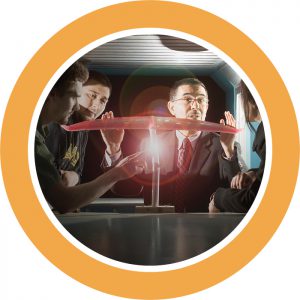 It can be taught in any college and any class — and used in any workplace. Communication is a foundational skill with tentacles that touch every part of a student’s educational and professional experience.
It can be taught in any college and any class — and used in any workplace. Communication is a foundational skill with tentacles that touch every part of a student’s educational and professional experience.
Storytelling, active listening, clarity, empathy. The forms communication takes are as plentiful as they are important. These skills are taught as much as they’re modeled at Cal Poly Pomona in an effort to create clean lines of constructive communication between everyone in the classroom, not just from faculty member to student, but from student to student.
“A lot of it has to be modeled by the instructor,” Dong says. “How do you make sure your thoughts are heard without putting anyone down; how do you make sure that everyone’s thoughts are heard?”
Career Readiness
 During the unveiling of his 2021-22 budget proposal, California Gov. Gavin Newsom proclaimed his affection for work-based learning and subsequently referred to both Cal Poly Universities as some of “the finest universities in the world.”
During the unveiling of his 2021-22 budget proposal, California Gov. Gavin Newsom proclaimed his affection for work-based learning and subsequently referred to both Cal Poly Universities as some of “the finest universities in the world.”
“I’m just a real believer in work-based learning,” he says. “You can intellectualize things. You can experience things.”
Whether it’s students running every aspect of The Restaurant at Kellogg Ranch or partnering with NASA to launch legitimate startup businesses, students find that education and the working world converge at Cal Poly Pomona in a very intentional way. The result are graduates renowned for their ability to hit the ground running.
Critical Thinking
 Finding solutions. Weighing alternatives. Justifying decisions.
Finding solutions. Weighing alternatives. Justifying decisions.
What ties all of these together? Critical thinking.
Students are encouraged to tackle the toughest of challenges in order to apply their problem-solving skills through critical thinking. It’s about considering myriad options, developing an approach or framework, making the all-important decision, and ultimately taking the time to digest why. This is the analytical approach that is lived at Cal Poly Pomona.
Take, for example, a project for which architecture and engineering students combined forces. The interdisciplinary task required them to design a habitat for astronauts that could travel in a spacecraft to Mars and unfold into living quarters. Critically thinking their way through a series of problems that accounted for space confinement, extreme temperatures and low gravity, to name a few, the group produced a working prototype in 20 weeks that was reviewed by NASA engineers made accessible by a project grant.
“Thinking critically about each of the alternatives, students can apply engineering guides, client demands, and ethics to make a final decision as to which solution to pursue,” Lamb says. “Of course, critical thinking applies to all decisions. In the end I stress to students that they need to take notes on why they make decisions.”
